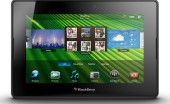Dell XPS 13 makes the MacBook Air look weak
Written by Mel // July 27, 2015 // Tech Reviews // Comments Off on Dell XPS 13 makes the MacBook Air look weak

Dell’s latest XPS 13 ultraportable computer is an absolute stunner.
The 13-inch laptop, which starts at a low $799, is somehow well priced and really well built. The XPS 13 is a startling example of what a laptop in 2015 should be: Functional and pretty, light and powerful, with a beautiful screen that doesn’t seriously compromise battery life.
I don’t care what the rumors are about a 12-inch MacBook Air; the XPS 13 is the best Ultrabook you can buy. Don’t wait.
Stunning all around
It may look like a smaller machine, but the XPS 13 really is a 13-inch laptop. And yes, it actually is smaller. That near-invisible bezel? Dell calls it the “Infinity Display,” a nearly edge-to-edge pane of glass with only the slightest hint of aluminum jutting out. This panel will make whatever computer you’re using look like a behemoth by comparison.
And as slick as the Infinity Display is, just like it is on the Dell Venue 8 7000 tablet, the picture quality is just as impressive. The screen is bright and easily usable outdoors, and color contrast and clarity are picturesque. There are two display flavors: Full HD 1080p (1,920 x 1,080 pixels) and QHD+ (3,200 x 1,800 pixels).
Open it up and the inside is covered in an almost-rubbery carbon fiber that’s crazy comfortable, surprisingly stain-resistant and very pleasant to the touch. Unlike the cold aluminum of Applelaptops and plenty of clones, or the stolid plastics of typical cheaper PCs, you’ll want your hands all over the XPS 13. Soft corners and the gunmetal-grey checkered covering somehow feel like just the tip of the iceberg. Out of all the laptops I’ve tested in the past year, this frame has no comparison.
I love to type on it, I love to carry it, and I love to use the touchscreen.
The small frame and light weight make a huge difference when compared to other laptops. The XPS 13 is about the size of a 12-inch laptop, though the keyboard is plenty easy to type on with smaller yet well-spaced backlit keys. The midsize trackpad also works well. Because of its smaller size, this laptop’s under three pounds and it still feels solid. That also means cranking away on a spreadsheet or a run ofBinding of Isaac is just as easy on a table as it is on your lap, without anything tipping over.
Just remember that this is as ultra-portable as a laptop gets. Like the MacBook Air, it has just two USB 3.0 ports, a Mini DisplayPort connector, an SD card slot and a headphone jack. Dell sells a USB adapter that includes VGA, HDMI, USB and Ethernet connectors, which is practically a requirement for desk use or travelers who want the most out of their computers.
Power at a price
The XPS 13 comes standard with the latest Intel Broadwell processor, a very low-power chipset that is built for balance between power and low wattage. The first test unit Dell sent over suffered from poor battery life until they sent a software update to patch the constantly running graphics processor, though more problems sprouted up during my testing with that PC. Everything from the CPU getting stuck in a specific power state (always at full-blast or always at barely trying) to the mouse activating the poorly placed battery indicator on the front of the laptop — you name it, my computer had it. It just needed proper vaccinations.
Dell sent a replacement laptop that didn’t have any driver or hardware issues, though it’s worth noting that the latest processors are so new that the software for them isn’t quite fully cooked. It’s rare to run into the hodgepodge of errors I encountered, but it happens.
Even though I didn’t see any strange issues on the second test laptop, there are some quirks to the XPS 13. If you’re plugged in or running it hard, the left side of the keyboard warms up to uncomfortable levels. It’s not bad enough to stop typing, but it will make you want to close some tabs and maybe play music from your phone instead.
Then there’s the wildly dense touchscreen.
With the QHD+ version, you need better than 20/20 vision to read text from the tiny screen
With the QHD+ version, you need better than 20/20 vision to read text from the tiny screen. Seriously, QHD+ is too dense for even a 15-inch laptop screen; it was too many pixels on the Razer Blade, and the XPS 13 is smaller. Windows, as good as 8.1 is, doesn’t support higher resolutions well, so why PC makers keep doing this is mind-boggling.
It’s an easy fix for buyers: The much more readable 1080p model with identical components — but no touchscreen — sells for $300 less and still has next to no bezel. At least with that model you can’t get fingerprints on the screen.
Better yet, the battery life on the XPS 13 with the 1080p display is rated much better, at 15 hours, compared to 11 hours for the QHD+ model. I’ve actually tested between 8-9 hours of battery life depending on usage, which is still good but not exactly as promising as Dell makes it seem. It also means you should see at least 12 hours on the 1080p model.
What does it all get you? A dual-core 2.2GHz Intel Core i5-5200U chip capable of boosting to 2.7GHz, with 8GB of RAM, the 128GB solid-state drive and Windows 8.1, all for $999.
Performance is good if you’re willing to give up some battery life for it. Maximizing battery life led to problems. After playing with the power settings, I was able to squeeze out 10 hours of use, but they were 10 somewhat unpleasant hours. The XPS 13 was slow. Scrolling was chunky, new web pages loaded slowly, and even typing in Word 2013 would sometimes lag.
But if you boost the power settings slightly, like setting it to the default “Balanced” power setting, then everything works fine, no questions asked. You’ll just need to plug in an hour or two sooner.
$999 model is the one to get
There may be a list of gripes, but they’re practically nothing when you consider that this is
one of the best Windows laptops ever built
one of the best Windows laptops ever built. While last year’s Acer Aspire S7 put a ton of power into a very MacBook Air-sized and styled body, the Dell XPS 13 manages to surpass Apple’s offering with something that’s actually unique. The XPS 13 is a laptop I want to use all the time. It’s a blast to use under almost any conditions. It can chug through as a workhorse connected to an external monitor or be your best friend in a cramped airplane seat. And that’s really the experience you should get from a laptop.
The fact that it won’t break your bank account in the process is a box of doughnuts to go along with the cake. While I wouldn’t recommend the $799 or $899 models, just because you’ll like using the XPS 13 so much that you’ll want the extra RAM and better CPU, the $999 model definitely hits the sweet spot of price for the whole package. Or, for another $100, double the internal storage to 256GB.
Make no mistake, though: If you’re looking for a powerhouse of a laptop, the Intel Core i5 in the XPS 13 is solid, but it isn’t a performance processor. You’d be better off waiting for the standard M-class chips in full-size laptops coming soon.
So let’s be clear. I like having the most powerful machine in the state. And I don’t want to give this up. The XPS 13 is too good, like that perfect cut of steak right off the barbecue. Why can’t every Windows laptop be this well-made? PC makers, I’m looking at you.
Dell XPS 13
The Good
Fantastically designed Windows laptop • Solid performance • Great price • Awesome display • Good battery life
The Bad
QHD+ model renders text too small • Left side of keyboard gets warm
The Bottom Line
With a beautiful display, great performance and big battery life, the Dell XPS 13 just set the bar really high for all other Windows laptops.
Have something to add to this story? Share it in the comments.





